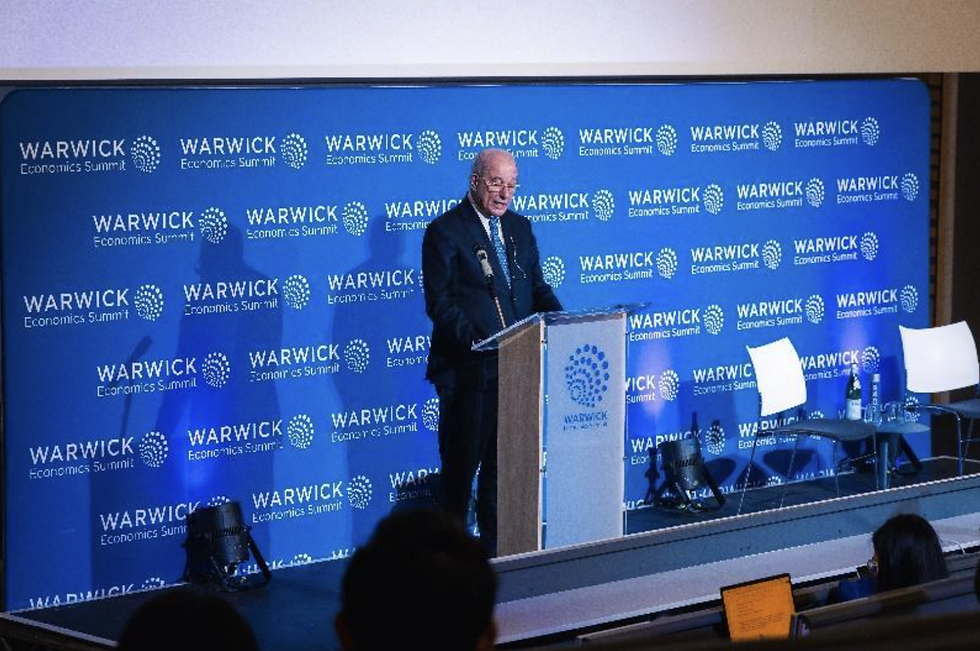Big Farmer: Has Starmer Doomed British Farming with Inheritance Tax Changes?
- Angus Harker
- Nov 28, 2024
- 7 min read
This article was written by Angus Harker a student at the University of Warwick. This article is part of his column 'The Other Side'.
UK news has been awash recently with controversial government decisions. They have changed the winter fuel allowance for old age pensioners, and recently they have decided to introduce changes to the agricultural and business property relief in 2026, effectively meaning that estates worth over £1m (the maximum amount that estates can apply for agricultural and business property relief) will have to pay inheritance tax at 20%.
It has been met with accrued ire from the National Farmers’ Union, the Country and Land Association, and even Jeremy Clarkson - who headed a march on the 19th November protesting these reforms. Their claims that 70,000 farms will be affected by the changes contrasts sharply with the government data suggesting that roughly 520 estates will be affected each year. Such glaring differences make supporting one side or the other confusing; who is right in this war of words?

The Devil is in the Details
Firstly, let’s delve into the statistics either side uses to make their case. The CLA’s claim that 70,000 farms could potentially be harmed uses data from the Department for Environment, Food and Rural Affairs (Defra). The data that they use is based on a survey that, as the BBC notes, “is designed to be representative of only about half of the farms in England”. Such a survey, then, is not reliable when extrapolated to the whole of the UK. Equally as important, then, is the point the BBC notes that this only applies to the owners of the estates (estates here being the sum total of assets that includes farmland, machinery, buildings, etc.); tenants will be exempted from the inheritance tax hikes, at least directly. This is a point we will come back to later. However, it is important to note that the proportion of land on agricultural holdings that is solely owned stood at 38% in 2023, with 55,095 solely owned agricultural holdings noted by Defra in that same year. It would be these owners that would chiefly fall under the proposed reforms.
Despite the fact that the latter statistic is over half the total of holdings by tenure structure that year, they still own a minority of land in proportion, which implies that many holdings do not own much land in terms of assets, and so will fall outside the remit of the inheritance tax. This is backed up by the data that the government uses from HMRC when considering this decision (in the annex in this summary), basing it on applications in previous years for agricultural and business property relief, and filtering it out by the value of estates worth £1.5m. As that remains relatively constant throughout the years, this data is more useful in determining how many people would apply for relief per year due to the death of the estate’s owner. However, it does not answer how many holdings will be affected by this in total, merely holdings per year. The bigger question is, who is most affected by this?
The Land and the Gentry - Why is Land so Expensive?
In order to answer this, it would be useful to get an idea of working farms in the UK. Ash Sarkar, who covered the march on Tuesday, gathered some essential information to digest. Firstly, the size of a small working farm was around 200 acres, according to farmers. In comparison to this Defra statistic, it concurs roughly with the 2021 average farm size of 81 hectares (200 acres). It is important to consider the other fact that almost half of all farms were less than 20 hectares in size (49.4 acres); again, however, a farm holding is not the same as a farm business, and several farm businesses might have several small holdings that constitute its estate. The most conclusive evidence from farmers themselves seems to suggest that, in order to be relatively small yet sustainable, you must have farm holdings totalling about 200 acres.
The next thing to consider is the cost of land per acre, and Savills data suggests that the average cost in 2023 was £8,200 per acre, with “prime arable land” going for as much as £10,100. Multiplied across your average small farm, this works out to about £1.64m in land alone, notwithstanding other assets such as farm machinery, buildings, etc. It is of no surprise that farmers are extremely upset that these taxes are going to cripple them, particularly as most in Sarkar’s video explain that they do not earn much money from the venture - it’s a lifestyle more than a profit for most.
But why is land so expensive? Part of that answer lay in the reason why the inheritance tax was introduced in the first place, to crack down on the amount of people buying the land to get away from paying inheritance tax. Even Jeremy Clarkson has made claims in 2021 saying much the same thing. The advent of the extremely rich buying land to avoid paying taxes increases the demand for a finite supply, which drives up prices. This inflates the value of the land itself to something that isn’t tenable, a process that chartered accountant Richard Murphy suggests is the reason why farming is such a profitless endeavour. It could be that the land isn’t worth what it is estimated.
Another reason might be the two-pronged fork of supermarkets and food manufacturers, operating on high margins, that the farmers have to sell to. These almost predatory business practices sell the food short, to ensure that consumers have the better end of the deal. As Murphy suggests, this inheritance tax would be good for farmers because, in the act of drawing away some of the supply of hawkish tax-dodgers, farmers might be able to buy decently-priced land - and when it comes to valuing land for inheritance, it might be that land falls far short of the £1m threshold upon which farmers start paying inheritance tax.
Every Silver Lining has a Cloud
It’s important to note that this is all conjecture at this point. Very rational conjecture, mind you, but still conjecture. Although I’d hate to class myself as a brooding misery guts, I am lukewarm to this rosy prediction by Mr Murphy. Firstly, Sarkar’s video of the protest suggests that a lot of farmers are protesting because they fall under the new reforms and don’t seem to be part of the gentrification of the countryside. The new rules, though aimed at the sorts of people who are contributing to this land cost increase for tax purposes, will still hurt ordinary farmers who sit on that threshold of £1m. These people, who are asset rich but cash poor, will likely have to suffer the wrath of these reforms. Although they may be eligible for more tax relief as BBC Verify suggests, they also may not be married. If a farm has been generationally owned for decades, then the last owner who bequeaths it to their children probably does not have a spouse with which to make the threshold £3m. When the owners sell their land, who will they sell it to? Likely the farms who have the money to take the hit, leaving a gulf between bigger farm businesses who own most of the crops, and the rest who don’t want to hit the threshold. In proposing this policy, Reeves does seem to be throwing the baby out with the bathwater.
Secondly, although the inheritance tax might deter the rich, it remains apparent that 20% inheritance tax is still half the amount of the usual, so whilst it may deter some, it likely won’t deter all. It remains a tax haven, just a slightly less lucrative one. This would mean that land prices won’t go down as much as Murphy predicts, and farmers will still struggle, especially against the cash rich who are still happy to fork out money for a reduced inheritance tax hit.
And what about those farms which are rented out? The estates who own them, if they get hit with an inheritance tax bill, can choose to spread their payments over ten years interest free. For the tenant farmers, what this will do is likely result in higher rent fees, carrying the cost from the landowner to the ones tilling the fields.
Thirdly, the assertion from Murphy that this paves the way for new farmers to pick up the skill of farming hinges precariously on the assumption that the current generation would take up farming as a business venture. Evidence suggests that Generation Z is taking on multiple sources of income. Farming is not a part-time job. Even if farming was more lucrative, it is still an unforgiving job that requires a lot of work, something that Clarkson’s Farm does well at illuminating.
Farmers need a lot more help so that they can survive, more than just tax relief. But for many, this is the final nail in the coffin for generational farmers.
Sowing the Seed or Reaping the Reward?
In short, both sides of the debate have a wide array of statistics with which to choose from, and the government utilises theirs better than the farmers. However, their decision does appear to be a “blunderbuss approach” to paraphrase Clarkson, and their communication that the majority won’t be affected by this appears to be a woeful underplaying of the situation. In a time when trade wars are just round the bend, the last thing the government should be doing is making it harder to produce local food.
Several commenters have compared this to Thatcher closing the mines in the 80s - something that ends what was already dying for decades. Which is not a completely honest take. There are different sources of energy, but food is food and has remained the same for millennia; and it should be worrying that the Labour government is being compared to the most quintessential Tory figure in British history.
The views and opinions expressed in this article belong solely to the writer and do not necessarily reflect the views and opinions of the Warwick Economics Summit.
References:
Country and Land Association-
Savills-
UK Government Website-
YouTube-
Richard Murphy-
BBC-













Comments